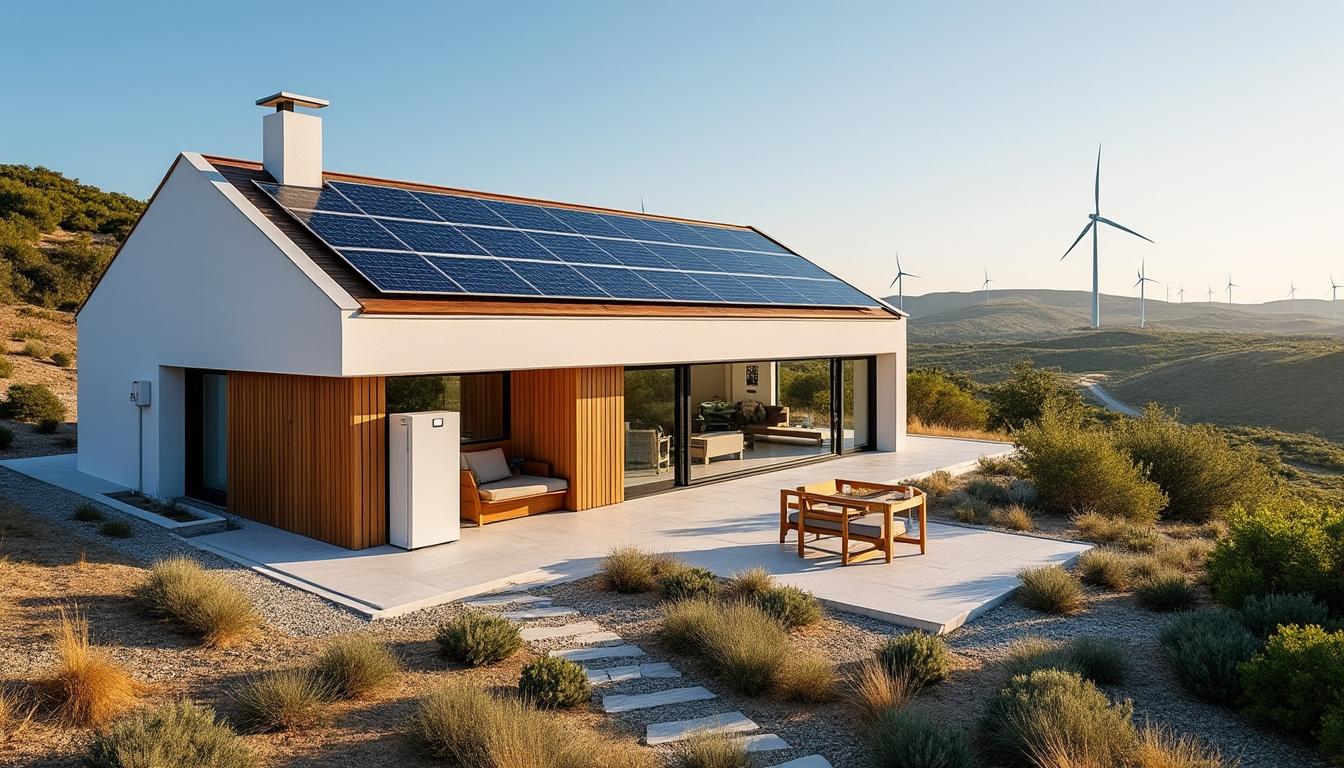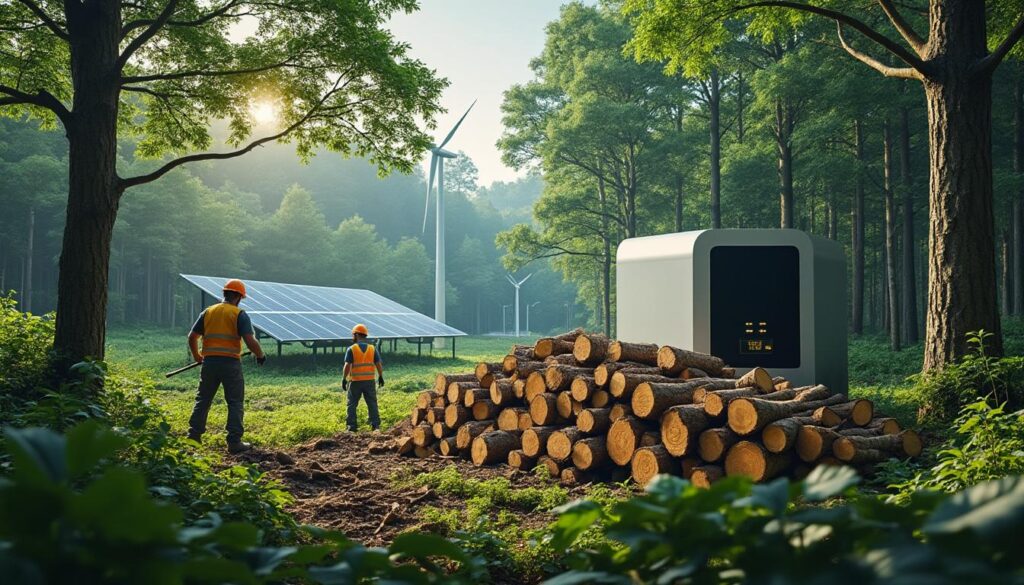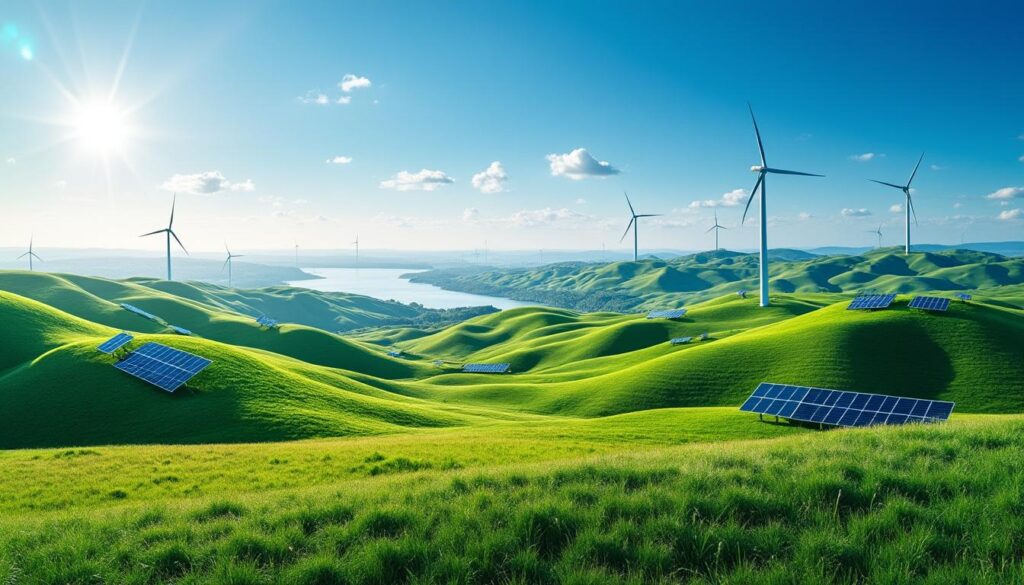The energy transition is no longer a distant topic: it enters homes, neighborhoods, and businesses with solutions that reduce costs, increase comfort, and decrease emissions. The future of renewable energies is being written now, with practical decisions that each person can make.
| Short on time? Here’s the essential: |
|---|
| ✅ Take advantage of low and even negative prices during solar/wind hours with dynamic tariffs and home automation ⚡ |
| ✅ Invest in storage proportional to your profile: batteries, thermal storage, or latent heat 🧊🔋 |
| ✅ Avoid the common mistake of installing solar without load management; schedule DHW, appliances, and EV charging ☀️🚗 |
| ✅ Use biomethane and energy communities to add value to waste and share local production ♻️🏘️ |
What is the future of renewable energies? Practical benefits to reduce bills and increase comfort
The advancement of renewables has ceased to be just good environmental news: it has become a concrete opportunity to save and gain comfort. In Portugal, between January 1 and August 31, 2025, 76.9% of 33,107 GWh of electricity generated came from renewable sources, creating time windows with very low and sometimes negative prices. Knowing how to take advantage of these windows is half the battle to reduce the electricity bill without sacrificing well-being.
Why this dynamic? The combination of rapidly expanding photovoltaic solar with mature wind creates peaks in supply. Without consumption-side management, part of that energy is wasted. With programmable devices, hot water storage, and smart EV charging, consumption shifts to the right hours, turning the home into a “flexible micro-system.”
Concrete actions that work in daily life
Three pillars compose an effective domestic strategy: on-site production (when it makes sense), consumption flexibility, and potential storage. In urban apartments, self-production may be limited, but flexibility and energy communities solve the rest. In houses, a well-sized photovoltaic system and a small but strategic battery enhance autonomy.
- ☀️ Schedule washing and drying machines for the solar midday period.
- 🚗 Charge the EV during price valleys; use a scheduled charger.
- 💧 Smart DHW: heat the tank between 12 PM and 4 PM or during night valleys.
- 🧊 Pre-cooling/heating the home with a heat pump during cheap hours.
- 📱 Dynamic tariff + automation (relays, smart plugs, apps) to orchestrate everything.
Real example: “Casa do Vale”, comfort with common sense
In a T3 house in Alentejo, a 5 kWp system, A+++ heat pump, 200 L tank, and three smart plugs reduced annual costs by about 35%, with superior comfort in summer due to pre-cooling in early afternoon. The secret was not “more technology,” but rather syncing consumption with moments of renewable abundance.
| Measure 🔧 | Average Impact 💥 | Estimated Investment 💶 | Implementation Time ⏱️ |
|---|---|---|---|
| Dynamic tariff | 5–15% savings | 0–€ | 1–3 days |
| Smart DHW scheduling | 10–20% on DHW | €150–€400 | 1 day |
| PV 3–6 kWp ☀️ | 25–45% on the bill | €3,500–€7,000 | 1–2 weeks |
| Battery 3–7 kWh 🔋 | +10–20% self-consumption | €2,000–€6,000 | 1 day |
Golden rule: align habits and technology with the “dance” of renewables, and the home works in your favor.

Energy storage and the future of renewables: how to stabilize costs and the system
As the renewable share increases, storage becomes the system’s “buffer.” At the European level, there is a growing number of calls for long-duration storage, signaling that the industry and regulators understand the strategic role of shifting energy from cheap hours to expensive hours. Everyone wins: consumers, grid operators, and producers who avoid cuts in production.
Storing electricity is only part of the story. Storing heat — whether in water tanks, phase change materials (PCM), or heated rocks — is often cheaper and more straightforward. Imagine capturing the “2 PM sun” in the form of hot water or as thermal inertia in the building, to use at the end of the day. This is the type of efficiency that reduces bills and emissions without excessive complexity.
What technology to choose for your home?
The answer depends on the consumption profile, available space, and objectives. Lithium-ion batteries shine when there is a need for daily shifting, especially with solar. Thermal storage is excellent for DHW and spot heating. In buildings with good thermal envelopes, stored heat in masses (floors, walls) balances fluctuations.
- 🔋 Residential battery: ideal for PV; backup during short outages.
- 💧 DHW tank 150–300 L: low cost, quick installation, significant impact.
- 🧱 Thermal inertia: radiant floors, massive walls; stable comfort.
- 🧊 PCM: summer comfort, stores “cold” during cheap hours.
- 🌀 Electric car as a battery (V2G/V2H): increasing potential.
| Option ⚙️ | Best use 🌞🌬️ | Main advantage 🏆 | Practical note 📌 |
|---|---|---|---|
| Li-ion battery | Daily solar | High self-consumption | Requires thermal management |
| DHW tank 💧 | Solar and low prices | Very low € per kWh | Combine with heat pump |
| PCM 🧊 | Urban summer | Comfort without spikes | Integrate into ceilings/walls |
| V2G/V2H 🚗 | Daily flexibility | Large capacity | Depends on the vehicle |
Urban and industrial scale
In the city, heat/cold networks with thermal storage reduce electric peaks. In industry, recycled waste heat lowers costs and emissions, as European storage experts advocate: efficiency first, then costly electrons. In Portugal, the convergence of low prices during solar hours and flexibility programs allows entire neighborhoods to lower their aggregate bills.
- 🏭 Waste heat as pre-heating for processes.
- 🏢 Office buildings with simple clicks in BMS to pre-cool.
- 🏘️ Communities with shared batteries for emergencies and peaks.
The central point is clear: storage, especially thermal storage, is the invisible glue that makes renewables predictable in comfort and price.
If you want to see real applications, explore studies and demonstrations at Ecopassivehouses.pt, focusing on accessible thermal management.
Solar, wind, and biomethane: smart integration in buildings and neighborhoods
The future of renewables involves fitting production where energy is needed. Roofs and facades become discreet generators; offshore wind farms stabilize the base; biomethane closes the loop on agricultural and urban waste, injected into the grid or used locally. The result: cleaner, closer, and more suitable energy for use.
In buildings, integration starts with architecture. Integrated PV (BIPV) replaces roofing materials, creating useful shading in summer. In areas with consistent winds, small turbines in locations away from urban fabric can support critical loads, although urban micro-wind rarely pays off. Biomethane, on the other hand, stands out for its storage capability and compatibility with existing infrastructures.
From roof to facade, without forgetting shade
A successful PV project is not only measured in kWh/year, but in thermal comfort and shifted loads. Ask: where does shading reduce solar gains at peak summer? Which surfaces receive useful diffuse light in winter? In buildings, roofs with photovoltaic pergolas create simultaneously usable and energy-generating spaces.
- 🏠 Photovoltaic ventilated facades to reduce heat and generate energy.
- 🌿 PV pergolas on terraces: shade and plug-in for EV or e-bike.
- 🪟 Adjustable louvered blades with thin PV to control light and heat.
- 🚿 Hybrid thermal solar (PVT) for DHW and electricity in the same panel.
| Application 🧩 | Direct benefit 🎯 | Project considerations 🧭 | Payback time 📈 |
|---|---|---|---|
| BIPV on roofs | Energy + shading | Rear ventilation | 6–10 years |
| PV pergola 🌞 | Outdoor comfort | Orientation and angle | 5–8 years |
| PVT ♨️ | DHW + electricity | Thermal management | 5–9 years |
| Micro-wind off urban areas 🌬️ | Critical loads | Measured winds | 7–12 years |
Biomethane that adds value to waste and lowers emissions
Agricultural and organic waste have energy value. Transformed into biomethane, they replace fossil gas and reduce dispersed methane. Neighborhoods with nearby restaurants, markets, and WWTPs can form circular energy ecosystems. In rural areas, agricultural cooperatives feed small biogas units, injecting renewable energy into the grid or generating useful heat for greenhouses.
- 🍃 Anaerobic digestion with biogas capture.
- 🔥 Biomethane boilers for specific uses, with low emissions.
- 🏭 Grid injection for sector and residential use.
Integration is the key word: use each technology where it yields the most, with architecture and planning multiplying results.
Networks, interconnections, and market design: how this affects your daily life
As solar production grows, there are hundreds of hours with very low and even negative prices. Without effective storage and reinforcement of interconnections — such as the connection to France, which is still below the European target of 15% — there is a risk of production cuts and volatility. This directly impacts consumers: tariffs, incentives, and service quality depend on the health of the system.
It’s easy to blame renewables for any failure, especially after a media blackout. But the evidence shows that the problem lies in the market design, insufficient flexibility, and interconnections falling short of what is needed. The solution lies in smarter grids, distributed storage, and active consumer participation.
Dynamic tariffs and flexible consumption
With a simple contract indexed to the market and a set of routines, the house keeps up with the price curve. The fridge does not need expensive energy at 7 PM; DHW can be heated at 2 PM; the EV can be charged with cheap electricity overnight. Automation takes care of the rest.
- 📉 Hourly pricing plans displayed on the mobile phone.
- 🕒 Schedule loads and climate control outside of peaks.
- 🔁 Responsive demand: allow aggregators to adjust loads for you.
- 🚗 V2H/V2G: the car as an emergency reserve and flexibility.
| Action 🛠️ | Expected gain 💡 | Requirement 📋 | Risk/mitigation 🛡️ |
|---|---|---|---|
| Dynamic tariff | 5–20% reduction | Smart meter | Volatility → automation |
| Flexibility aggregator 🤝 | Revenues per kW | Simple contract | Privacy → clear clauses |
| V2G 🚗🔌 | Covered peaks | Bidirectional charger | EV guarantee → smooth profiles |
| Residential battery | Higher self-consumption | Space and ventilation | Degradation → good management |
Sectoral debates in Portugal, such as the “Portugal Renewable Energy Summit,” reinforce this diagnosis: flexibility and interconnections are the keys to transforming abundant renewables into stable prices and viable investments.
At the end of the day, the most powerful tool in your home is the ability to shift consumption to the right hours.
Tendencies 2025–2030 in renewable energies: what to do now to not fall behind
The goals of the National Energy and Climate Plan by 2030 point to -55% emissions compared to 2005, 51% renewables in gross final consumption, and 29% in transport. For citizens, this translates into more incentives, better tariffs, and new participation opportunities. Globally, execution replaces intention: mature technologies are scaled, and cities become integration platforms.
Which trends deserve your immediate attention? The digitalization of residential energy, energy communities, green hydrogen for hard-to-electrify uses, and smart thermal rehabilitation. All of this with a focus on real solutions, without magic promises.
Four decisive fronts for individuals
- 🧠 Energy automation: real-time measuring, apps, usage rules.
- 🏘️ Communities: sharing PV among neighbors with fair accounting.
- ❄️ Thermal envelope: efficient windows, shading, tightness.
- 🚚 Power-to-X and hydrogen where it makes sense (industry, fleets).
| Trend 🚀 | Opportunity for you 🎯 | First step 👣 | Success indicator 📊 |
|---|---|---|---|
| Digitalization | Lower bill | Install Wi-Fi meter | kWh shifted to valleys |
| Energy community 🏡 | Sharing and resilience | Organize a condominium | Self-consumption quota (%) |
| Thermal rehabilitation 🧱 | Comfort and health | Energy audit | Peak reduction (kW) |
| Green hydrogen ⚗️ | Difficult sectors | Local pilot projects | tCO₂ avoided |
90-day action plan
To not delay, set a short plan: measure, adjust, invest. In the first month, monitor consumption and identify peak times. In the second, switch to a dynamic tariff and create scheduling routines. In the third, evaluate small investments (thermal accumulator, smart plugs) and prepare the dossier for PV or energy community.
- 📅 Month 1: measuring and diagnosing.
- ⚙️ Month 2: dynamic tariff and basic automation.
- 💡 Month 3: “small investments” with great returns.
Sector reference events in Lisbon have emphasized: execution is the priority. With clear rules and aligned incentives, consumers and businesses accelerate the transition. The sustainable path is made with short, consistent, and data-driven steps.
If you retain one idea, let it be this: the future of renewables rewards those who adjust habits today, because flexibility is value — for you, for the grid, for the planet.
Source: expresso.pt


